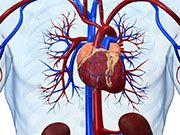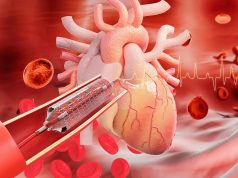Such assessments should only be starting points for predicting risk, researcher explains
TUESDAY, Feb. 17, 2015 (HealthDay News) — Four of five widely used formulas may overestimate people’s risk of atherosclerotic cardiovascular disease (ASCVD) by as much as 154 percent in some cases, according to research published in the Feb. 17 issue of the Annals of Internal Medicine. That includes the most recently developed risk calculator, unveiled alongside new treatment guidelines in 2013 by the American College of Cardiology (ACC) and American Heart Association (AHA).
Michael Blaha, M.D., M.P.H., of the Johns Hopkins Ciccarone Center for the Prevention of Heart Disease in Baltimore, and colleagues tested five different calculators using data from a relatively recent heart study, begun in 2000. It included a racially diverse group of 4,227 Americans who were aged 50 to 74 and free of heart disease at the outset of the study. Blaha’s team compared the calculators’ risk predictions against study participants’ actual rates of ASCVD over 10.2 years.
It turned out that, on average, four of the five calculators overestimated people’s risk by anywhere from 8 to 154 percent. The fifth calculator — the Reynolds Risk Score — overestimated the risk by only 9 percent in men; on the other hand, it underestimated women’s risk by 21 percent. The new ACC/AHA calculator overestimated risk by 86 percent in men and 67 percent in women.
Donald Lloyd-Jones, M.D., Sc.M., who chairs preventive medicine at the Northwestern University Feinberg School of Medicine in Chicago and helped craft the ACC/AHA guidelines, noted the ACC and AHA tested their calculator in this same study group and saw similar effects. The problem, Lloyd-Jones told HealthDay, is that this study group is not the best reflection of the U.S. public: They were closely followed, offered computed tomography scans to detect coronary calcium, and most eventually ended up on a preventive therapy. “They’re not really a representation of the ‘natural course’ [of cardiovascular disease],” Lloyd-Jones said. “We’re trying to predict what would happen if people don’t get any preventive therapy.”
Full Text (subscription or payment may be required)
Copyright © 2015 HealthDay. All rights reserved.








